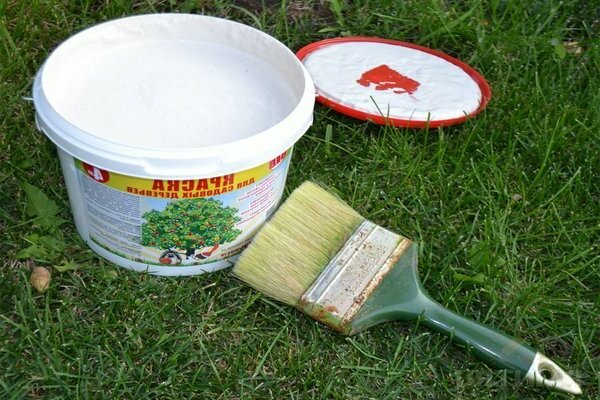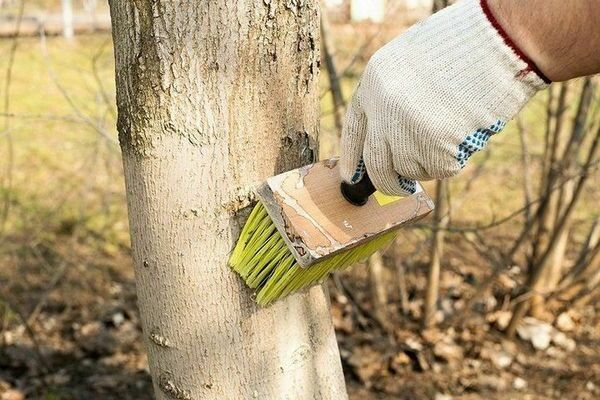Whitewashing trees
Content:
Whitewashing trees
Whiteness on trees does not at all serve an aesthetic purpose, as inexperienced gardeners believe.
Whitewashing is an important care product for garden trees. With its help, you can protect trees from pests, diseases and frost. And the money spent is much more budgetary than many alternative methods.
Protection against insects - pests

Everyone knows that some insects - pests with the onset of cold weather make their way into the cracks of the tree bark and spend the winter there and lay their eggs. Eggs tolerate winter well because they have protective properties. But not only insect eggs can be found on the bark of a tree, but the spores of many diseases.
How to save a tree from this misfortune. First you need to clean the old bark, the one that can be easily removed. Then - whitewash the whole tree! The fact is that if you whitewash a tree up to 1 meter, then parasites will die only at this height, and the rest, which are higher, will perfectly survive and in the spring will begin their vital activity again.
Frost protection

The frost itself is not terrible, but the sharp fluctuations in day and night temperatures. As a rule, this period occurs at the end of winter and beginning of spring. But even in the middle of winter, such fluctuations are no exception.
Cracks in the bark of a tree appear from sudden fluctuations in night and day temperatures. As a result of this difference, the bark of the trees bursts. Such damage is called frost breaker.
In such weather conditions, whitewashing will be of significant help to your
tree! It can be used to smooth out the temperature contrast. By applying something white, which means reflective, to the tree, you can protect the tree from daytime burns.
Whitewashing trees: how, what and when to whitewash trees

It is necessary to whitewash both adult and young trees. But with young trees
it is worth being more careful. After all, a large concentration of lime solution can damage the young bark. Therefore, it is worth halving the concentration of lime or using a special water-based paint for trees.
It is recommended to whitewash the trees twice. The main and most important whitewash is autumn. It should be held in October-November. If it was not possible to whitewash the trees in the fall, it is worth visiting the garden plot
in winter.
The second whitewash - spring, repeated. It should be held in early April.
If the whitewashing layer is persistent and lasts up to a year, then the third whitewashing is not necessary.
If this is not observed and the whitewash was washed away by the rain, then it is worth doing.
Autumn whitewashing. It is necessary that the autumn whitewashing lasts all winter, until the middle
spring. Therefore, it needs to be made more resistant. In this case, clay has worked well. To do this, take slaked lime and clay, all in equal proportions. Then add some glue (you can use carpentry). And we will dilute everything with water to the desired consistency. It is desirable to get a thick "sour cream".
Spring whitewashing. It differs from the winter is not so persistent. You can easily carry out another whitewashing if necessary. Take slaked lime (2.5 kg), copper sulfate (0.5 kg), glue (200g) and water (10L). It is necessary to dilute everything to the consistency of sour cream. But if, nevertheless, you do not want to resort to a third whitewash, you need to make a more durable second. For this you need to use clay.
And remember to whitewash trees in dry weather! Make sure that there are no gaps or crevices. If there are deep cracks on the bark of the tree, treat them first with a solution of vitriol.
.

